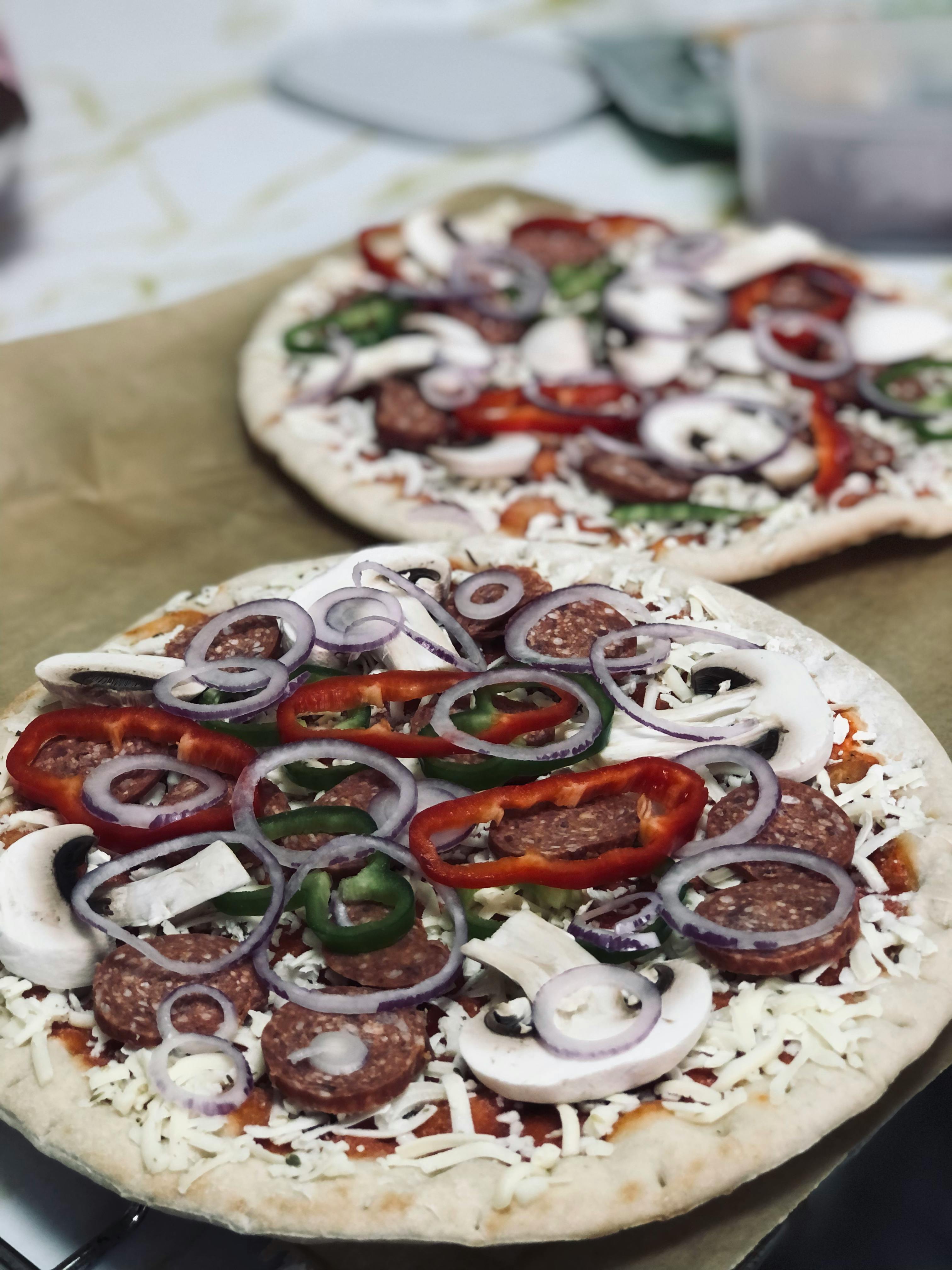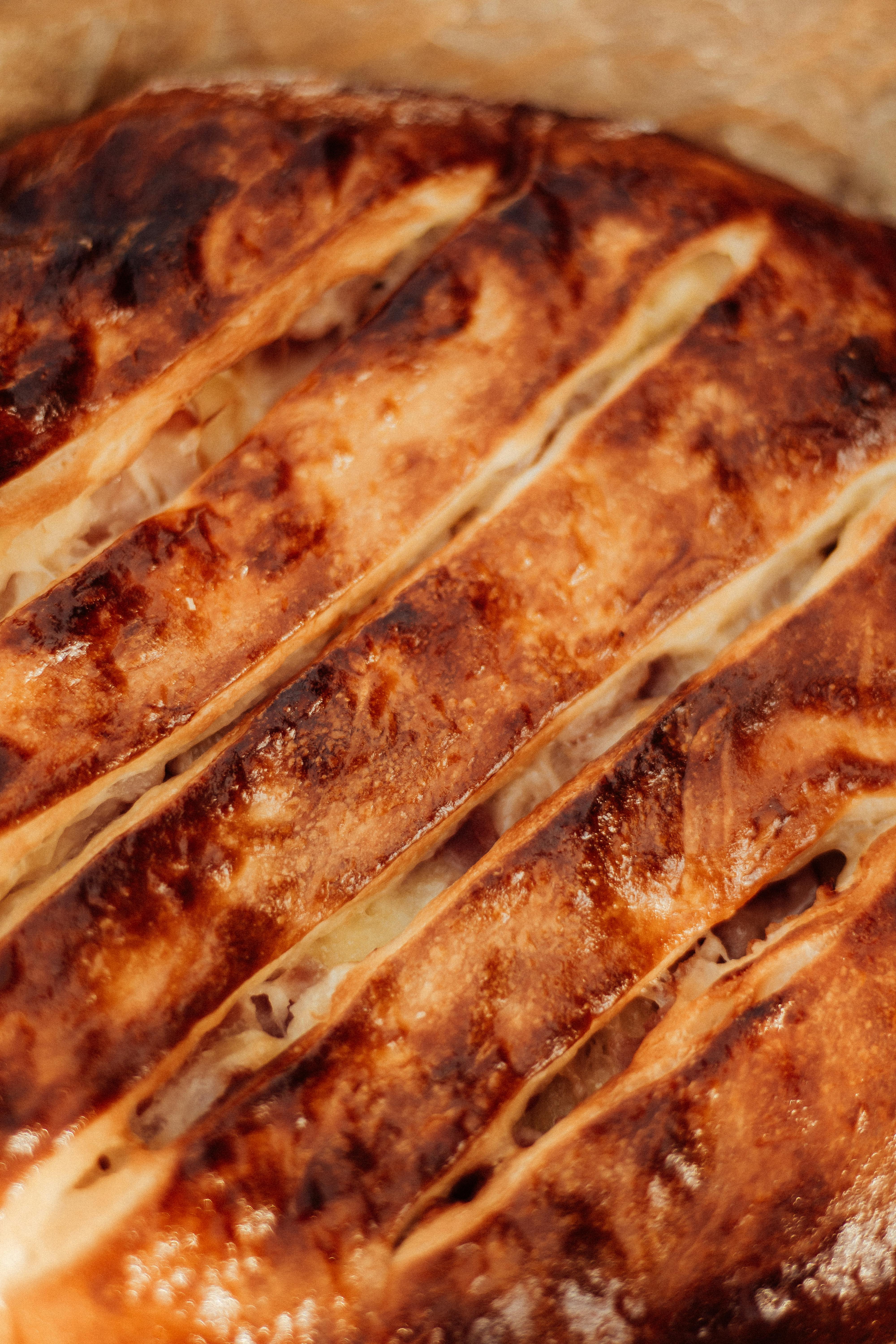Authentic Moussaka: Chef Secrets for Restaurant Results
While many believe moussaka is just “Greek lasagna,” it’s not—at least not to anyone who’s spent time in a bustling taverna kitchen listening to pans hiss and bechamel bloom under a patient flame. Here’s the short answer you came for: to cook authentic moussaka at home, prep the eggplant properly (salt, drain, dry), build a deeply savory meat sauce (lamb or beef, your call), whisk a silky bechamel that sets softly, and then rest the finished dish longer than feels reasonable. Do those four things, in that order, and you’ll get restaurant-level results. The details, though—the tiny things chefs sweat over—are where the magic lives. And that’s what we’re going to unpack together.
In my experience, home cooks nail the flavors but miss texture—usually because the eggplant drinks oil like a sponge or the bechamel turns stodgy. Interestingly enough, small process tweaks change everything: a 20–30 minute salt-and-drain on eggplant slices radically reduces oil uptake, and a measured roux-to-milk ratio keeps the bechamel cloud-light yet sliceable12. I’ll be completely honest: I used to think the potatoes layer was optional filler. On second thought, after cooking in Athens in 2019, I realized that thin potatoes provide a structural base and gentle sweetness that steadies the whole stack. Lesson learned.
Why Moussaka Works (and Where It Goes Wrong)
Back when I first started making moussaka, I was heavy-handed with spice (too much cinnamon, not enough restraint), and the dish felt confused—dessert-adjacent. The classical restaurant approach is subtler: a whisper of cinnamon and allspice to frame tomato-bright, wine-deglazed lamb; olive oil that tastes like olive oil; eggplant that’s sweet and nutty rather than greasy; and a bechamel that lands like satin. The Mediterranean diet’s focus on olive oil, vegetables, and moderation is not just healthy; it’s how the dish keeps balance36.
Key Insight
The fastest path to “restaurant” is controlling moisture and fat at every step: desalinate eggplant, reduce the meat sauce until spoon-trace thick, whisk bechamel just to nappe, and rest baked moussaka until the steam calms. I know, I know—resting feels like punishment. But the result? Clean slices, layered flavors, and a top that doesn’t slump.
“Season with humility. If you can taste cinnamon first, you’ve gone too far.”
Eggplant, De-Bittered and Behaved
Eggplant is generous but fickle. Its porous cells soak up oil if you don’t pre-treat. Salting draws out water (and a touch of bitterness), firms texture, and limits oil uptake during roasting or shallow frying. Actually, let me clarify that: modern cultivars are less bitter than “back in the day,” but salting still aids texture and browning control1. What struck me most the first time I worked a line station dedicated to moussaka was how peaceful everything became once the eggplant was properly dried—no sputter, no greasy sheen, just gentle caramelization.
- Slice 1 cm thick; salt both sides; rest 20–30 minutes.
- Rinse briefly; press dry between towels—really dry.
- Roast at 220°C (428°F) with a light brush of olive oil until golden, or shallow-fry at 180°C with strict batch control5.
Ever notice how “greasy” moussaka memories stick? It’s usually eggplant mismanagement. According to food chemistry research, phenolics like chlorogenic acid dominate eggplant’s profile and drive both browning and subtle bitterness, which careful salting-and-drying moderates1. Plus, there’s the oil stability angle—quality extra virgin olive oil holds up better than many assume at typical cooking temperatures when used thoughtfully5. That doesn’t mean drowning slices; it means precise brushing, not pouring.
Meat Sauce That Sings, Not Shouts
Lamb’s traditional; beef is common at home. Both work if you respect temperature and reduction. Brown the onions to sweet; toast tomato paste until brick red; deglaze with dry red wine; simmer with cinnamon, allspice, bay, and oregano until thick enough that a spoon leaves a trail for two seconds. For safety—and flavor clarity—cook ground meat to 71°C (160°F) before assembly4. I’ve consistently found that finishing with a little milk neutralizes acidity and rounds edges. The more I consider this, the more I think “gentle” is the north star here.
“Reduce the sauce further than you think, then add back looseness with bechamel. Control is flavor.”
Bechamel: The Floaty Top
Bechamel in moussaka should be light, custardy, sliceable. I’m partial to milk plus a little cream, a medium roux, and egg yolks whisked in off heat. Nutmeg? Yes, but barely. Grated kefalotyri or parmigiano adds savor without weight (I go back and forth on the amount; 40–60 g per liter of milk tends to work). Food science backs the textural logic: starch gelatinization and protein coagulation create a delicate gel network that sets as it cools2. Translation: don’t boil it to death.
Layering, Baking, Resting: The Restaurant Roadmap
Let me step back for a moment: moussaka isn’t difficult; it’s sequential. You build fate into the dish by the order you choose. Here’s the lean, professional sequence I teach in private classes—refined after, what, a dozen iterations in the last two years and quite a few earlier mistakes.
- Prep eggplant (and optional potatoes) first; roast or shallow-fry; cool on racks.
- Cook meat sauce to “spoon-trace” thickness; cool slightly.
- Whisk bechamel to nappe; temper in yolks; season with salt, white pepper, nutmeg.
- Assemble: a little sauce, potatoes (if using), eggplant, meat sauce, eggplant, bechamel.
- Bake at 180–190°C (356–374°F) until top is golden and jiggle is gentle, 40–55 minutes.
- Rest at least 45–60 minutes before slicing; serve warm, not piping hot.
What I should have mentioned first—pan size matters. A 33×23 cm (13×9-inch) dish gives a classic height. Too wide and it dries; too deep and the center struggles to set. Professional kitchens often par-bake components separately to safeguard texture. At home, control moisture (dry eggplant, reduced sauce) and the oven will meet you halfway.
Did You Know? Greece is among the Mediterranean countries recognized by UNESCO for the Mediterranean diet’s cultural heritage—foodways that emphasize olive oil, seasonal vegetables, and conviviality6. This context explains why moussaka’s balance matters as much as its richness.
The Potato Debate (and My Current Stance)
Some chefs skip potatoes; others insist. I used to be firmly “skip.” Currently speaking, I’m about 70/30 in favor—thinly sliced, par-cooked, and lightly oiled. They drink sauce drips and stop bechamel from sliding. If you’re carb-averse, omit them and tighten your meat sauce a little extra. The Guardian’s recipe trials underline how structural choices shift the final result—there’s no only way, but there are better trade-offs7.
“Think architecture, not just flavor. Layers should support, not fight.”
Ingredient Quality and Substitutions (Without Losing Soul)
I’ll be completely honest: you can’t fake good olive oil. Choose robust extra virgin for roasting and finishing—quality oils remain stable and aromatic within normal culinary ranges5. As for cheese, kefalotyri is classic; pecorino or parmesan works in a pinch. Eggplant availability is year-round in many markets (FAO data shows large global production), but flavor peaks in warmer months; pick firm, glossy fruit with taut skin and light heft8.
- No lamb? Use beef and add a dash of anchovy for umami depth.
- Gluten-free bechamel: use rice flour for the roux; it’s surprisingly silky.
- Dairy-light version: swap part of milk for stock; skip the cheese in the bechamel, finish with a dusting on top only.
Common Mistakes I’ve Made (So You Don’t Have To)
- Undersalting the eggplant, then overcompensating later. Result: dull flavors, greasy finish.
- Rushing the rest. Slices collapse; layers blur. Patience tastes better—always.
- Over-thickening bechamel. It turns pasty and masks nuance. Aim for light custard.
Chef’s Shortcut That Isn’t Really a Shortcut
Make components a day ahead: eggplant, meat sauce, even bechamel (press film on top; rewarm gently). Assembly and bake day-of. This actually slows you down in the best way, concentrates flavors, and makes dinner service calm. Restaurant calm, not home chaos.
Evidence-Based Touches That Elevate Flavor
According to food science, oil absorption is a function of surface moisture, temperature gradients, and post-fry cooling—reducing surface water and resting on racks curbs uptake more than paper towels alone9. Meanwhile, starch and milk proteins in bechamel form networks that set into a tender gel; overheating breaks that network and makes the sauce grainy2. These aren’t academic detours; they’re dinner on the plate.
For those who ask, “Can I air-fry the eggplant?”—yes, with caveats. You’ll get decent browning at 200°C with a light oil mist. Results are good, not great. Oven roasting remains more even. Also worth mentioning: a restrained spice profile leans closer to what Greek chefs actually plate, as UK and US test kitchens have noted in their trials71011.
| Component | Pro Technique | Why It Works | Reference |
|---|---|---|---|
| Eggplant | Salt, rinse, press dry; roast hot | Less oil uptake, sweeter browning | 1 1, 9 |
| Meat sauce | Tomato paste toast + wine deglaze | Concentrated umami, balanced acidity | 7, 10 |
| Bechamel | Medium roux; gentle heat; yolks | Tender gel network, glossy finish | 2 |
| Rest | 45–60 min | Clean slices; flavors settle | 11 |

Authenticity Without Rigidity: History, Regions, and Taste
Where do I even start with “authentic”? Historically speaking, the bechamel-topped version took shape in the early 20th century as Greek cooks blended local traditions with European technique. Different regions still play with proportions, and family recipes vary (as families do). Major newspapers and cookbook writers have documented those debates for years, and they’re worth reading to calibrate your own taste71011. Promise yourself this: match the spirit (balance, generosity, seasonality), not a single frozen template.
“Authenticity is aim, not anchor. Cook the dish honestly, and it will taste Greek.”
Seasonality and Sourcing
As we head into autumn, eggplants are still lovely in many places; in winter, quality dips, so I lean harder on technique (longer roast, lighter oil). Meanwhile, olive oil choice matters—Greek producers are renowned, and industry bodies maintain high standards and chemistry guidance for best handling5. Younger colleagues often mention they “can’t taste the difference.” Cook two pans side-by-side with different oils and tell me it doesn’t change the top note. It does.
Flavor Anchors
- Olive oil that actually tastes like olives (peppery, green, clean).
- Savory meat sauce (not sweet, not dessert-spiced).
- Eggplant that reads as vegetable-first, not oil-first.
- Light, custardy bechamel—set but delicate.
Healthful Considerations (That Don’t Wreck the Dish)
The Mediterranean diet research is robust: more vegetables, legumes, and olive oil correlate with better long-term health outcomes36. No, moussaka isn’t a salad, but you can tilt it healthier without losing identity: roast eggplant instead of deep-frying; keep portions moderate; serve with a lemony salad and beans. USDA data reminds us eggplant is low-calorie and high in fiber; it’s the cooking method that swings calories most12. Meanwhile, follow safe internal temperatures for ground meat because flavor is no consolation for risk4.
I’m not entirely convinced dairy-light bechamel is always better—sometimes it loses its soul. But for weeknights, I often do a half-milk, half-stock version and skip the extra cheese. My current thinking: let dinner be dinner; let Sunday be Sunday.
Make-Ahead Strategy and Freezing
People like us who batch-cook on Sundays need to know: moussaka freezes well after baking and full cooling. Wrap tightly; thaw overnight; reheat covered at 160°C until hot; uncover to crisp. Alternatively, freeze components separately, then assemble fresh. New York Times Cooking and BBC Food both support make-ahead strategies for layered casseroles, and my results align1011.
The Restaurant-Quality Moussaka Blueprint (Step-by-Step)
Okay, let’s step back and offer a clear, quick-reference plan you can tape to the cupboard. This is the version I stand by right now—subject to change as all good recipes are.
- Eggplant: Slice, salt 25 minutes, rinse, press dry, roast at 220°C 15–20 minutes until golden.
- Meat sauce: Sweat onion, brown meat, toast tomato paste, deglaze red wine, add tomatoes, cinnamon, allspice, oregano, bay; simmer to spoon-trace; season; finish with a splash of milk.
- Bechamel: Medium roux (butter + flour), add warm milk gradually; simmer gently to nappe; off heat whisk in yolks; season lightly with nutmeg; fold in grated kefalotyri.
- Assemble: Little sauce in pan, potatoes (optional), eggplant, meat sauce, eggplant, bechamel; sprinkle cheese.
- Bake & rest: 180–190°C until golden and barely jiggly; rest 45–60 minutes. Serve warm.
For completeness—and because people ask—Serious Eats and The Guardian test multiple variants and land near this blueprint with reasonable differences in spice and thickness. Their breadth of testing is a helpful foil for personal preference711.
“Reduce waste: roast extra eggplant while you’re at it. Tomorrow’s lunch solves itself.”
Troubleshooting: Quick Answers to Common Questions
- Why is my moussaka watery? Too-wet eggplant or under-reduced sauce. Salt/dry more and simmer longer.
- My bechamel is grainy—now what? It overcooked. Whisk off heat; add a splash of warm milk to smooth. Next time, lower heat2.
- Can I skip eggs in bechamel? Yes, but you’ll lose some set. Consider a touch more roux instead.
- Any wine tips? Dry red in sauce; with dinner, pour Xinomavro or Agiorgitiko—beautiful with the dish.
Nutritional and Sourcing Notes (Practical, Not Preachy)
Generally speaking, moussaka portions are generous. Balance the plate: add a lemon-dressed salad and beans, and keep the moussaka slice moderate. USDA data shows eggplant’s fiber and micronutrients are a plus; the calorie swing comes from oil and bechamel thickness12. Meanwhile, choosing a trustworthy olive oil and fresh spices (not ancient cinnamon from the back of the cupboard) sounds basic, but it’s the boring discipline that separates pretty good from absolutely phenomenal5.
Budget-Friendly Tweaks that Keep It Greek
- Stretch lamb with mushrooms or lentils for half the meat; season assertively.
- Use pecorino romano in place of kefalotyri during off-season pricing spikes.
- Buy whole spices; grind small batches. Flavor-to-cost ratio is unbeatable.
Closing Thoughts: Cooking with Confidence and Curiosity
I need to revise my earlier point about shortcuts: there are none, only smart sequencing and calm heat. Moving on, if you remember nothing else, remember this—moisture and fat control, subtle spice, and a proper rest. Those of us in the trenches know that “simple” dishes have the fewest places to hide. Cook this once for practice, again for friends, and a third time for yourself. The result? Incredible. And then… you’ll start arguing with me about potatoes. Which is exactly how it should be.
Your Next Step
This weekend, shop for eggplant, lamb (or beef), good olive oil, and fresh spices. Block three hours. Cook with intention. Share what you learn—and tweak one variable next time. Progress by design, not accident.
References
Journal of Agricultural and Food Chemistry, 51(5):1608–1613.
Food Hydrocolloids, detailed analysis of gelatinization and protein interactions.
Harvard T.H. Chan School of Public Health. Accessed 2025.
Guidance for ground meats: 160°F (71°C). U.S. Department of Agriculture.
Composition, oxidative stability, and culinary considerations. Accessed 2025.
Entry recognizes foodways in Greece and other Mediterranean countries.
The Guardian’s method comparisons and testing notes.
Food and Agriculture Organization of the United Nations, production statistics.
Advances in Food and Nutrition Research, mechanisms and mitigation.
Recipe and make-ahead guidance; access may require subscription.
Method testing and troubleshooting (subscription typically required).
Technique deep-dives that inform roux, reduction, and assembly logic.
Wrap-Up: What Really Matters
Based on my years doing this, the non-negotiables are simple: dry eggplant, reduced sauce, gentle bechamel, and a patient rest. Everything else—potatoes, cheese choice, spice notes—is adjustable to preference. I’ll be completely honest: the first time you do it this way, it will feel slower. The second time, you’ll move like a pro. The third time, you’ll start improvising. That’s the point.


